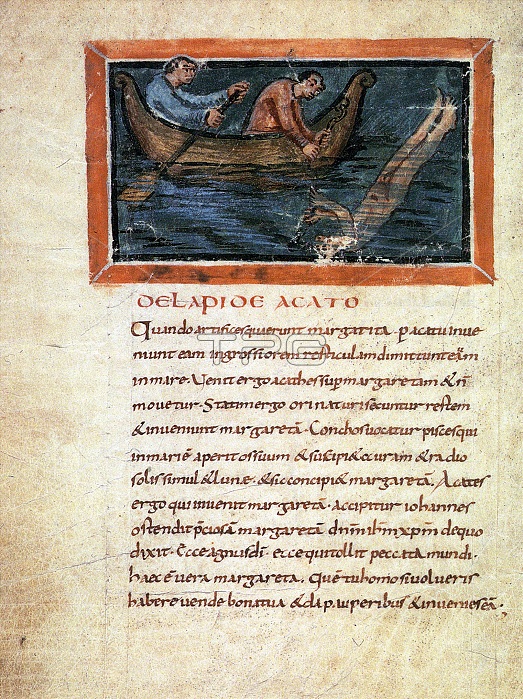
The 'Bern Physiologus' is a 9th century illuminated copy of the Latin translation of the Physiologus. It was probably produced at Reims in France about 825-850. It is believed to be a copy of a 5th century manuscript. Many of its miniatures are set, unframed, into the text block, which was a characteristic of late-antique manuscripts. It is one of the oldest extant illustrated copies of the Physiologus. The Physiologus is a didactic text written or compiled in Greek by an unknown author, in Alexandria; its composition has been traditionally dated to the 2nd century CE by readers who saw parallels with writings of Clement of Alexandria, who is asserted to have known the text. The Physiologus consists of descriptions of animals, birds, and fantastic creatures, sometimes stones and plants, provided with moral content. Each animal is described, and an anecdote follows, from which the moral and symbolic qualities of the animal are derived. Manuscripts are often, but not always, given illustrations, often lavish. The book was translated into Latin in about 700, and into Ethiopic and Syriac, then into many European and Middle-Eastern languages, and many illuminated manuscript copies such as the Bern Physiologus survive. It retained its influence over ideas of the 'meaning' of animals in Europe for over a thousand years. It was a predecessor of bestiaries (books of beasts). Medieval poetical literature is full of allusions that can be traced to the Physiologus tradition; the text also exerted great influence on the symbolism of medieval ecclesiastical art: symbols like those of the phoenix rising from its ashes and the pelican feeding her young with her own blood are still well-known.
| px | px | dpi | = | cm | x | cm | = | MB |
Details
Creative#:
TOP27282272
Source:
達志影像
Authorization Type:
RM
Release Information:
須由TPG 完整授權
Model Release:
No
Property Release:
No
Right to Privacy:
No
Same folder images:

 Loading
Loading